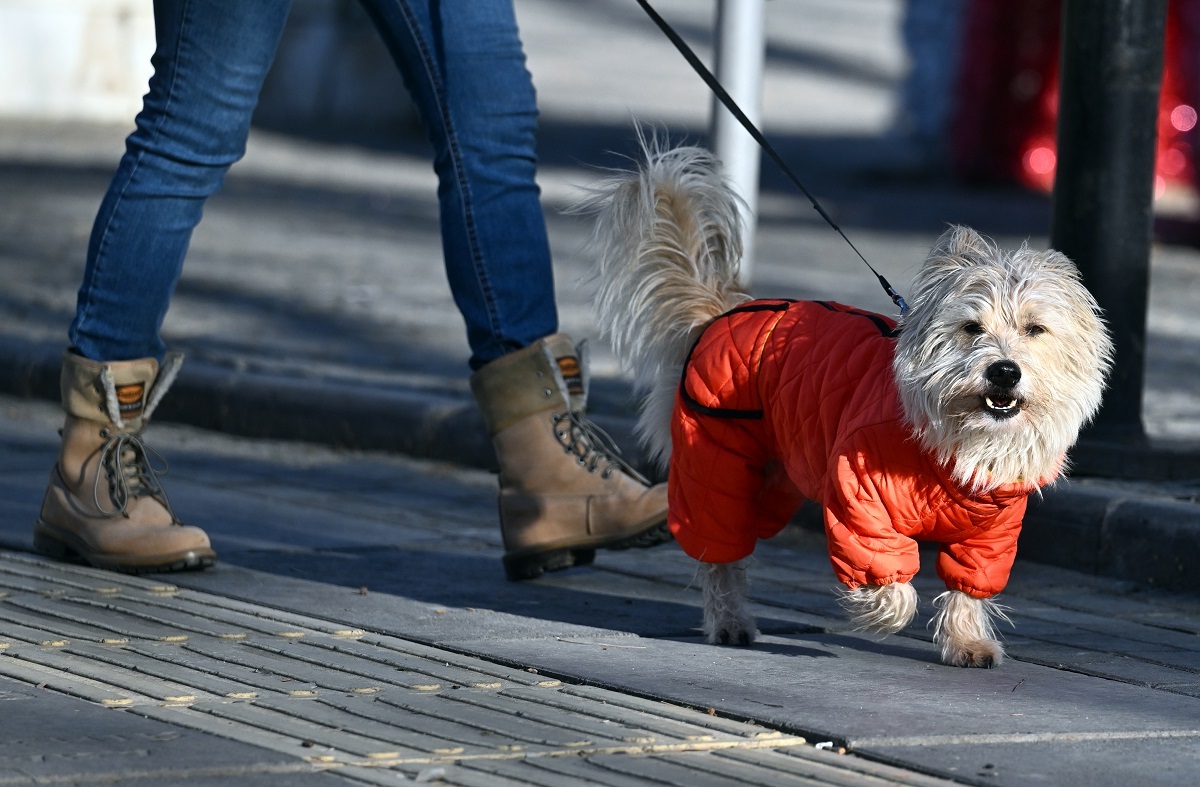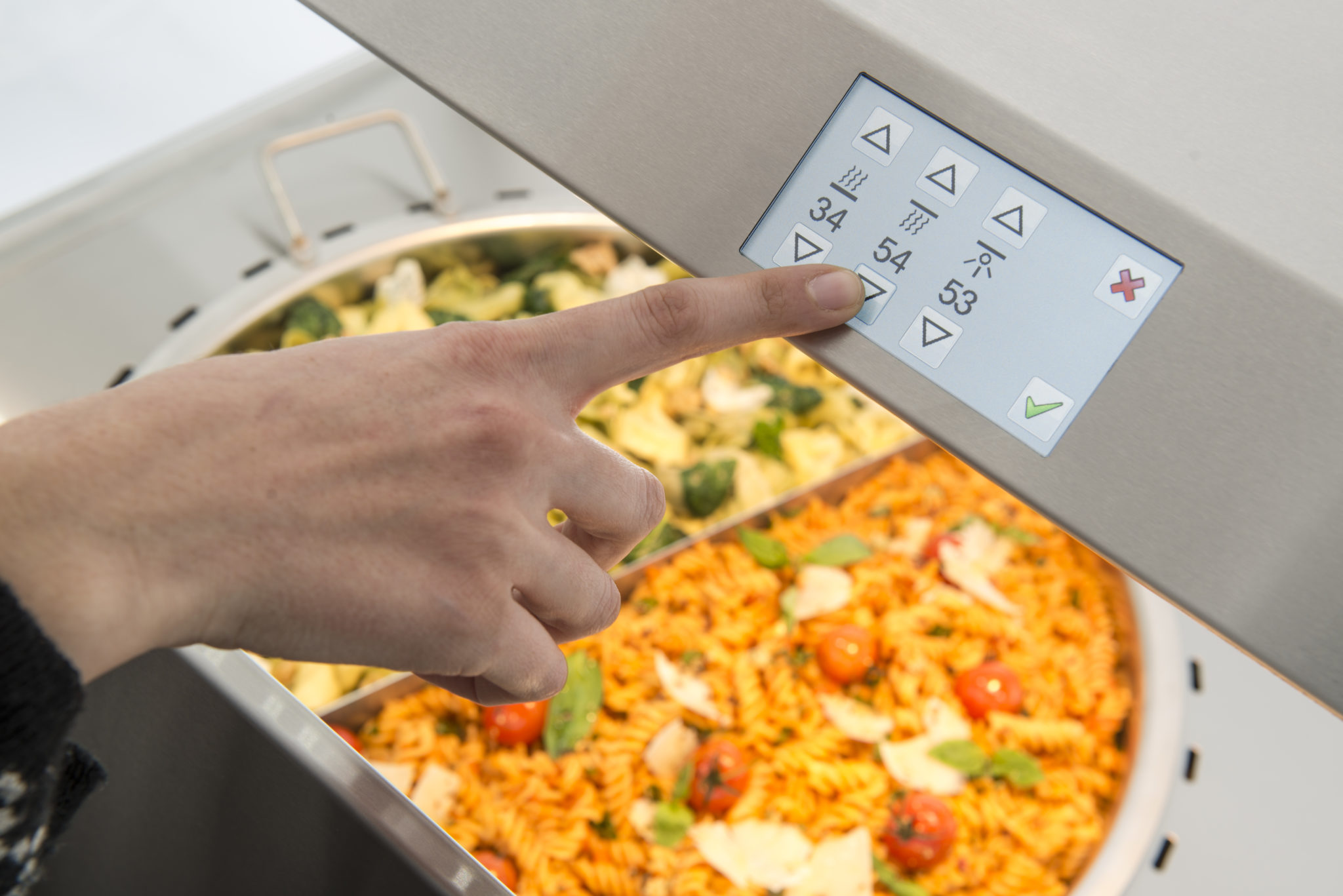Home>Health & Nutrition>Ideal Indoor Temperature For Dogs: Ensuring A Comfortable Environment For Your Canine Companion


Health & Nutrition
Ideal Indoor Temperature For Dogs: Ensuring A Comfortable Environment For Your Canine Companion
Published: February 19, 2024
Ensure your dog's health and comfort by maintaining the ideal indoor temperature. Learn how to create a cozy environment for your furry friend.
(Many of the links in this article redirect to a specific reviewed product. Your purchase of these products through affiliate links helps to generate commission for Temperatures.com, at no extra cost. Learn more)
Table of Contents
Understanding the Importance of Indoor Temperature for Dogs
Maintaining an appropriate indoor temperature is crucial for the well-being and comfort of our beloved canine companions. Dogs, much like humans, are sensitive to temperature variations and can experience discomfort or health issues if exposed to extreme conditions. Understanding the significance of indoor temperature for dogs is essential for responsible pet ownership.
Dogs rely on their fur coats as the primary means of regulating body temperature. While this provides some insulation, it may not be sufficient to protect them from extreme heat or cold. High temperatures can lead to heat exhaustion or heatstroke, especially in breeds with thick coats or short snouts. On the other hand, low temperatures can cause hypothermia and discomfort, particularly for smaller or short-haired breeds.
Moreover, extreme temperatures can impact a dog's overall well-being. Prolonged exposure to heat can lead to dehydration, lethargy, and even organ damage. Conversely, cold temperatures can result in shivering, reduced mobility, and susceptibility to respiratory infections. Therefore, maintaining a moderate indoor temperature is essential to prevent these adverse effects on our furry friends.
In addition to physical discomfort, temperature extremes can also affect a dog's behavior and mood. High temperatures may lead to restlessness, irritability, and a lack of appetite, while cold temperatures can cause lethargy and reluctance to engage in physical activities. By ensuring a comfortable indoor temperature, pet owners can promote their dog's overall happiness and well-being.
Understanding the importance of indoor temperature for dogs enables pet owners to take proactive measures to create a safe and comfortable environment for their canine companions. By considering the specific needs of their breed, size, and coat type, pet owners can make informed decisions to maintain an ideal indoor temperature that supports their dog's health and happiness.
Read more: The Ideal Temperature Range For Dogs
Factors to Consider When Determining the Ideal Indoor Temperature for Dogs
-
Breed and Coat Type: Different dog breeds have varying tolerance to temperature. Breeds with thick fur, such as Huskies and Malamutes, are more suited to colder environments, while short-haired breeds like Chihuahuas and Greyhounds are more sensitive to the cold. Understanding your dog's breed and coat type is crucial in determining the ideal indoor temperature for their comfort.
-
Size of the Dog: The size of a dog can also influence its sensitivity to temperature. Smaller dogs have a larger surface area relative to their body mass, making them more susceptible to heat loss in colder temperatures. Conversely, larger dogs may generate more body heat and tolerate colder conditions better. Considering the size of your dog is important when setting the indoor temperature to ensure their comfort.
-
Age and Health: Puppies, senior dogs, and those with health conditions may have a harder time regulating their body temperature. Puppies have developing systems that are less efficient at maintaining body heat, while senior dogs may have reduced mobility and thinner coats. Dogs with health issues may also be more sensitive to temperature extremes. Taking into account the age and health status of your dog is essential when determining the ideal indoor temperature to support their well-being.
-
Outdoor Climate: The outdoor climate in your location plays a significant role in setting the indoor temperature for your dog. In colder regions, indoor temperatures need to be higher to provide adequate warmth, while in hotter climates, maintaining a cooler indoor environment is crucial to prevent heat-related issues. Adapting the indoor temperature based on the outdoor climate helps ensure that your dog remains comfortable throughout the year.
-
Activity Level: The activity level of your dog can impact their internal body temperature. Dogs that are highly active may generate more body heat and require a slightly lower indoor temperature to remain comfortable. Conversely, less active dogs may benefit from a slightly warmer indoor environment. Considering your dog's activity level can help tailor the indoor temperature to their specific needs.
-
Behavioral Cues: Observing your dog's behavior can provide valuable insights into their comfort level with the indoor temperature. Signs of discomfort, such as excessive panting, seeking out warm or cool spots, or shivering, can indicate that the indoor temperature may need adjustment. Paying attention to your dog's behavioral cues allows you to fine-tune the indoor temperature to ensure their well-being.
By taking these factors into consideration, pet owners can determine the ideal indoor temperature that promotes a comfortable and safe environment for their canine companions. Adjusting the indoor temperature based on these factors demonstrates a proactive approach to caring for your dog's well-being and overall happiness.
Signs of Discomfort in Dogs Due to Temperature
Recognizing the signs of discomfort in dogs due to temperature variations is essential for responsible pet ownership. Dogs, much like humans, exhibit specific behaviors and physical cues when they are experiencing discomfort related to temperature. By being attentive to these signs, pet owners can take prompt action to ensure their canine companions remain comfortable and safe.
Signs of Heat Discomfort
- Excessive Panting: Dogs regulate their body temperature through panting, but excessive panting, especially when accompanied by drooling, can indicate overheating.
- Lethargy and Weakness: Heat exhaustion can cause dogs to become lethargic and weak, with reduced interest in activities they typically enjoy.
- Seeking Shade or Cool Surfaces: Dogs may actively seek out shaded areas or lie on cool surfaces such as tiles to alleviate the discomfort of excessive heat.
- Bright Red Gums and Tongue: When a dog's gums and tongue appear brighter red than usual, it can be a sign of heat stress and discomfort.
Signs of Cold Discomfort
- Shivering: Dogs may shiver or tremble when they are feeling cold, especially if the indoor temperature is too low for their comfort.
- Curling Up: When dogs curl up tightly or tuck their paws under their bodies, it is a natural response to conserve body heat and stay warm.
- Reluctance to Go Outside: If a dog shows reluctance to go outside, particularly in cold weather, it may indicate that the outdoor temperature is uncomfortable for them.
- Cold Ears and Paws: Touching a dog's ears and paws can provide insights into their comfort level, as these areas are more susceptible to feeling cold.
Read more: Ideal Temperature For Dogs To Wear A Coat
General Signs of Discomfort
- Excessive Drooling: While panting is a natural cooling mechanism, excessive drooling in the absence of heat or exertion can signal discomfort related to temperature.
- Restlessness and Pacing: Dogs may exhibit restlessness and pacing when they are unable to find a comfortable spot due to temperature extremes.
- Changes in Appetite: Extreme temperatures can affect a dog's appetite, leading to reduced food intake or disinterest in meals.
- Lack of Interest in Play: Discomfort due to temperature can cause dogs to lose interest in play and physical activities they typically enjoy.
By being mindful of these signs, pet owners can promptly address any discomfort their dogs may be experiencing due to temperature variations. Adjusting the indoor temperature, providing access to water, and offering appropriate bedding or cooling mats are effective measures to ensure the well-being and comfort of canine companions.
Understanding these signs of discomfort empowers pet owners to create a supportive environment that promotes their dog's physical and emotional well-being, regardless of the prevailing temperature conditions.
Tips for Maintaining a Comfortable Environment for Your Canine Companion
-
Regulate Indoor Temperature: Set the indoor temperature within a range that aligns with your dog's breed, size, and coat type. In colder weather, provide a warm and cozy environment, while in hotter climates, ensure adequate ventilation and access to cool areas.
-
Provide Adequate Shelter: If your dog spends time outdoors, ensure they have access to a well-insulated and weatherproof shelter. This shelter should offer protection from rain, wind, and extreme temperatures, providing a safe retreat for your canine companion.
-
Access to Water: Always provide a constant supply of fresh water, especially during warmer months. Hydration is crucial for regulating body temperature, and dogs should have easy access to water both indoors and outdoors.
-
Comfortable Bedding: Offer comfortable and insulated bedding for your dog, particularly in colder conditions. This can include soft blankets, elevated beds, or heated pads to provide warmth and comfort during chilly nights.
-
Utilize Cooling Solutions: In hot weather, consider using cooling mats, fans, or air conditioning to help your dog stay cool and comfortable. These solutions can be especially beneficial for breeds that are prone to heat sensitivity.
-
Monitor Outdoor Time: Be mindful of the duration and timing of outdoor activities, especially during extreme temperatures. Avoid prolonged exposure to heat or cold, and schedule outdoor exercise during cooler parts of the day.
-
Grooming and Coat Care: Regular grooming helps manage your dog's coat, ensuring it provides adequate insulation without becoming overheated. Brushing and trimming your dog's fur as needed can contribute to their overall comfort.
-
Observe Behavioral Cues: Pay attention to your dog's behavior and physical cues related to temperature. If they seek out cool spots, pant excessively, or show signs of shivering, it may indicate the need for adjustments to the indoor environment.
-
Consult a Veterinarian: If you have concerns about your dog's tolerance to temperature or specific health considerations, seek guidance from a veterinarian. They can provide tailored advice based on your dog's individual needs.
-
Consider Canine Clothing: For dogs that are particularly sensitive to cold temperatures, consider using doggy sweaters or jackets to provide additional warmth during outdoor activities.
By implementing these tips, pet owners can create a comfortable and supportive environment that prioritizes their dog's well-being and ensures they remain content and healthy regardless of the prevailing indoor or outdoor temperatures.














